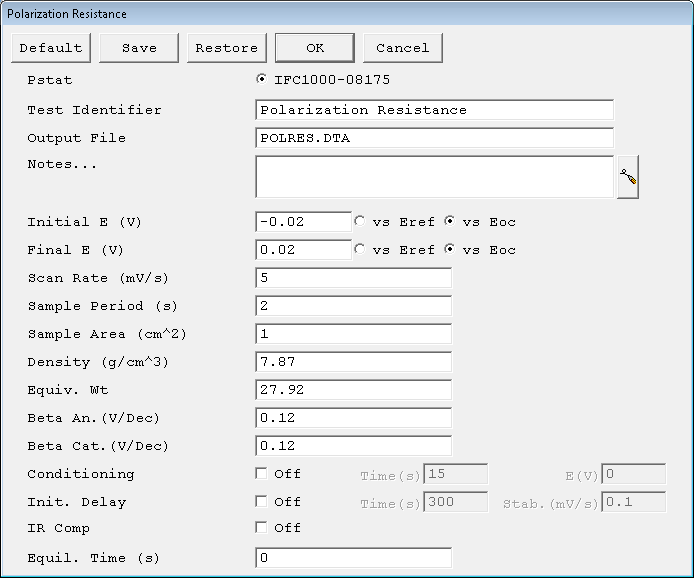|
Spacing between data points. It also helps determine the Step Size of the staircase ramp and the Number of Points in the data curve.
The Sample Period sets the length of a step. The height of a step depends on both the Scan Rate and the Sample Period. Calculate the Step Size and the Number of Points in the scan from
Step Size = Scan Rate × Sample Period
Number of Points = Scan Range / Step Size
The Step Size is rounded to the resolution of the D/A converter making the steps. The resolution of the D/A converter is dependent on the type of potentiostat you use. Consult your potentiostat manual for more information. A typical Step Size for a polarization resistance scan is between 1 and 5 mV/step.
If the step size has to be rounded to fit the resolution of the D/A converter, the sample period is also adjusted so that the scan rate is correct. The Number of Points must be less than that specified in GLOBALS.EXP. If you have more points, the experiment will abort just before the scan phase of the sequence. The units used for the Sample Period are seconds. The shortest Sample Period we recommend is 0.1 second. The longest Sample Period allowed is 600 seconds.
|

